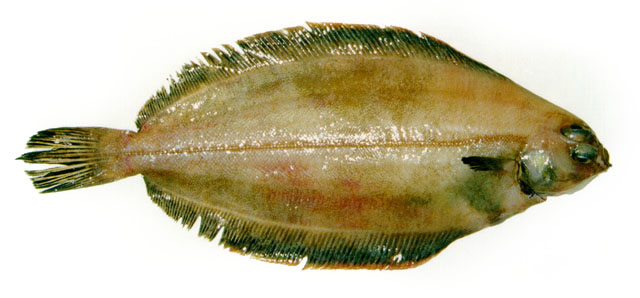| Pleuronectidae (Righteye flounders), subfamily: Microstominae |
| 60 cm SL (male/unsexed); max.weight: 2,500.0 g; max. reported age: 25 years |
|
demersal; marine; depth range 18 - 1570 m, oceanodromous |
| Western Atlantic: Gulf of St. Lawrence and Grand Banks in Canada to North Carolina in USA; Eastern Atlantic: Northern Spain to northern Norway (Ref. 7251). |
|
Dorsal spines (total): 0-0; Dorsal soft rays (total): 95-120; Anal soft rays: 85-102. Pectoral fin of eyed side shorter than head. Distal part of pectoral fin blackish (Ref. 232). Large mucus pores on the blind side of the head. Uniform coloration, rough scales. Body elongated with complete straight lateral line (Ref. 35388). |
| Inhabits soft mud bottoms in fairly deep water (Ref. 9988). Benthic (Ref. 58426). Feeds on crustaceans, polychaetes, brittle stars (Ref. 9988) and fishes (Ref. 58426). Marketed fresh or frozen; eaten steamed, fried, microwaved and baked (Ref. 9988). |
|
Vulnerable (VU); Date assessed: 12 February 2021 (A1bd) Ref. (130435)
|
| harmless |
|
Source and more info: www.fishbase.org. For personal, classroom, and other internal use only. Not for publication.

